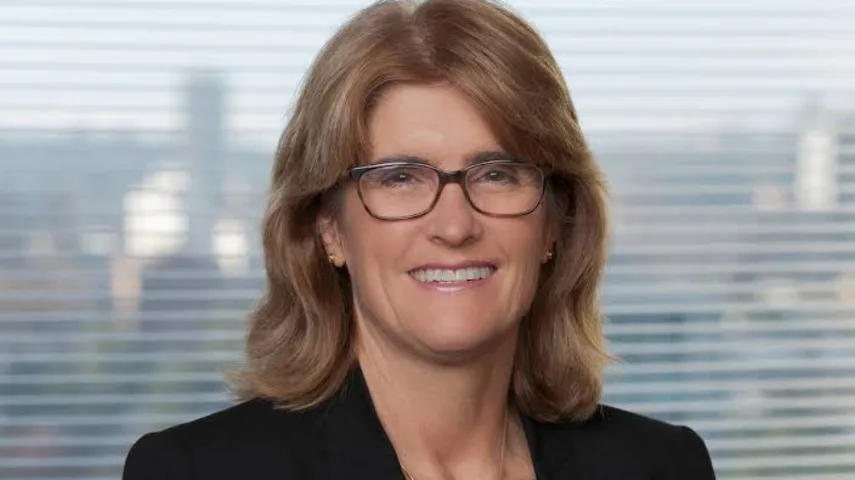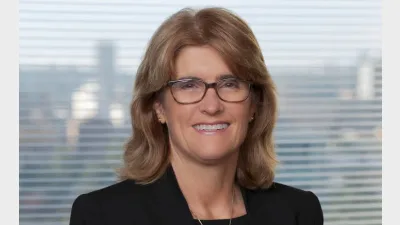RBA governor douses hopes for early rate cut



Reserve Bank governor Michele Bullock has quashed hopes of an out-of-schedule rate cut, telling an event in Sydney that it remains too early to determine the trajectory of interest rates as the RBA grapples with growing global economic volatility.
Addressing the 40th anniversary celebration of Chief Executive Women, the Reserve Bank governor acknowledged the economic turbulence unfolding on the world stage, particularly as international financial market conditions evolve.
“There will be a period of uncertainty and adjustment as countries respond to the ongoing tariff announcements by the United States administration,” Bullock said.
“It will take some time to see how all of this plays out and the added unpredictability means we need to be patient as we work through how all of this could affect demand and supply globally.”
However, she made it clear that the RBA is not seeing the same degree of impact as past market crises, such as the 2008 global financial crisis.
“Financial market and economic volatility can be expected as this process unfolds. But there are two points I want to make on this,” Bullock said.
“First, we’re not currently seeing the same degree of impact as previous market events like in 2008 for example. And second, the Australian financial system is strong and well-placed to absorb shocks from abroad.”
The RBA governor outlined that the bank continues to closely monitor financial conditions both domestically and internationally, working in collaboration with Australian financial regulators and central bank counterparts globally.
“We are carefully considering several factors, including the response of our trading partners, additional counter-responses from the US, the response of our exchange rate, and adjustments in other financial markets,” she noted.
“A key focus for us is how all this uncertainty is affecting decisions made by households and businesses in Australia.”
Despite the evolving landscape, Bullock emphasised that the RBA’s focus remains on its dual mandate – maintaining price stability and full employment.
With the next Monetary Policy Board meeting scheduled for 19–20 May, she stressed that the RBA’s careful analysis of all available information is crucial in determining future policy decisions.
“We are bringing all this together to form an objective assessment of what it means for the outlook for domestic activity and inflation here at home,” she said.
“We are mindful of not adding to the uncertainty, and to that end, it’s too early for us to determine what the path will be for interest rates. Our focus remains on our dual mandate for price stability and full employment.”
Over the past week, economists’ predictions about the RBA’s next move have become increasingly uncertain.
US President Donald Trump’s decision to pause tariffs on several countries, while escalating levies on Chinese goods, has added complexity to the already challenging task of forecasting the Reserve Bank’s actions.
On Thursday morning, Deutsche Bank reversed its earlier forecast, now expecting the RBA to deliver a 25-basis-point rate cut in May. The shift came just days after the bank had forecast a more aggressive 50-basis-point cut.
Interestingly, NAB did the converse, announcing on Thursday that it sees the RBA slashing rates by 50 basis points at its May meeting.
“Our call for a 50 bp easing in May reflects the fact that with the real cash rate of 1.3 per cent and policy currently restrictive, the RBA needs to play catch up. With longer periods between RBA board meetings now a feature of the RBA calendar, some flexibility on the policy front has been lost, especially when developments are moving fast,” NAB said.
“We now see the RBA easing more quickly through mid-2025, taking the cash rate to 2.6 per cent by February,” the bank added, tipping a further 25 bp easing at each of the November and February meetings.
Betashares outpaced even NAB’s projections, declaring on Thursday that the Reserve Bank could deliver an out-of-cycle rate cut, followed by another at its scheduled May meeting.
Its chief economist David Bassanese said: “Nothing overnight lessens the need for a rate cut in May, and by hopefully more than 0.25 per cent, my view is the RBA should cut by 0.35 per cent.
“There is now also a strong case for the RBA to act earlier – given the large decline in consumer sentiment reported for April and the fact the next scheduled RBA policy meeting is over five weeks away.”
Speaking at Momentum Media’s Election 2025 event on Thursday, AMP’s Shane Oliver said a difference of opinion among economists is common. While he believes there is a chance the central bank could opt for a 50-basis-point cut in May, he does not see merit in an emergency cut.
“Emergency cuts are made in the midst of a market dysfunction, when money is not flowing properly through the economy, but we don’t have that situation,” he said, but conceded that if things do get worse, then such a move could be warranted.
“Bond markets are starting to take us in that direction, but I don’t think we’re at that point yet.”
Recommended for you
Australian super fund leaders have flagged AI as a major force reshaping the global economy and investment landscape, stressing the importance of responsible use and long-term thinking to harness its full potential.
The era of “US exceptionalism” may be drawing to a close, with widespread implications for global markets, currencies, and interest rates, but the message from the super sector is funds remain well-positioned to weather the volatility.
UniSuper’s investment strategy in decarbonisation remains firmly rooted in economic viability rather than political shifts, according to its chief investment officer.
In what is being called a co-ordinated cyber attack, a number of Australia’s largest superannuation funds have suffered a breach with thousands of user accounts compromised.












